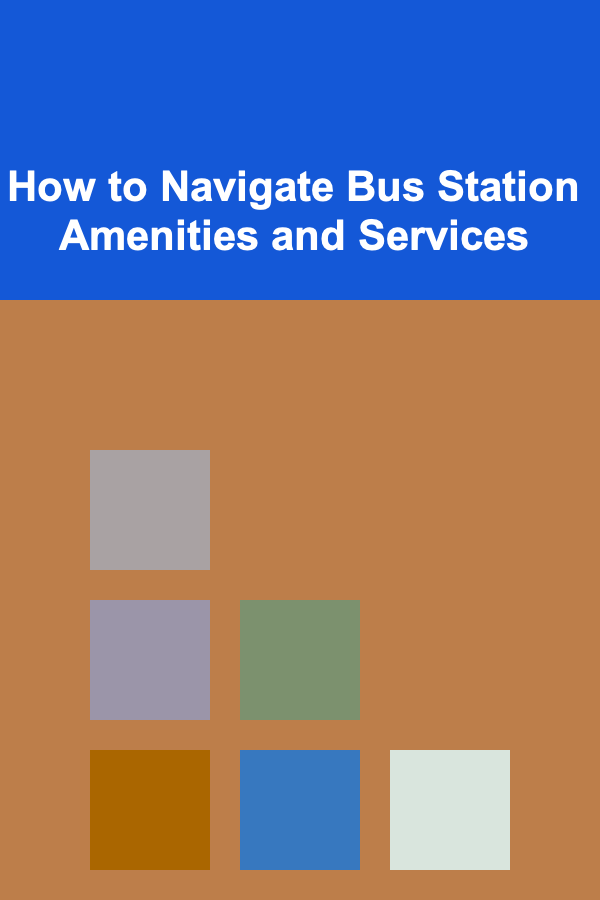
10 Tips for Keeping Music Lessons Fun and Motivating
ebook include PDF & Audio bundle (Micro Guide)
$12.99$10.99
Limited Time Offer! Order within the next:

Teaching music is an enriching and rewarding experience, but it comes with its own set of challenges. One of the most important goals for any music educator is to keep students motivated and engaged while ensuring they continue progressing in their musical journey. Music, at its core, is a form of self-expression and creativity, but without the right approach, lessons can become repetitive, uninspiring, or overwhelming.
In this article, we will explore ten tips that can help you make music lessons both fun and motivating for students of all ages and skill levels. These strategies will not only help maintain enthusiasm but also encourage consistent practice, learning, and growth. Whether you're teaching beginners or advanced musicians, these approaches will transform your lessons into an enjoyable and rewarding experience for both you and your students.
Set Clear, Achievable Goals
Setting goals in music lessons is crucial for progress, but it's essential to ensure these goals are both clear and achievable. Students often feel overwhelmed if goals are too complex or long-term. Break down learning into smaller, more manageable steps that students can accomplish in a short time. This could include mastering a specific scale, playing a simple song, or learning a new technique.
Why It Works
Small wins can boost a student's confidence and give them a sense of achievement, which is motivating. When students know they can achieve something within a lesson or over a week of practice, it keeps them excited to continue.
Tip
At the start of each lesson, outline a small goal for the student to focus on. Afterward, celebrate the achievement together, no matter how minor it may seem.
Incorporate Music the Student Enjoys
One of the most powerful ways to make music lessons motivating is by incorporating songs or genres that your student enjoys. Whether they like pop, classical, jazz, or rock, integrating their personal musical tastes into your lessons will keep them more engaged. Ask your students about their favorite songs or artists and see how you can use them to teach techniques or theory.
Why It Works
Students are more likely to be motivated to practice music that resonates with them emotionally. It makes the learning process feel more personal, rather than something they "have to" do.
Tip
Adapt the student's favorite songs into exercises that align with what you're teaching. For instance, if a student loves a certain pop song, you can break it down into smaller parts that demonstrate specific techniques like finger positioning, rhythm, or note reading.
Use Interactive Technology and Apps
In the digital age, there are plenty of music apps and software that can make learning more interactive. Apps like Simply Piano, GarageBand, or Musiah offer fun ways to practice instruments. You can incorporate these into lessons or even suggest them for practice outside of lessons.
Why It Works
Technology can make learning feel less like a chore and more like a game. It also helps students track their progress and stay engaged through interactive feedback.
Tip
Set aside part of your lesson to let students explore music apps. This will provide them with a different learning experience and keep their interest piqued.
Gamify the Learning Process
Everyone loves a good game, and music lessons are no exception. Gamifying the learning process can be a great way to keep students motivated and make lessons fun. You can create musical quizzes, timed challenges, or even competitions between students (if you're teaching multiple students at once).
Why It Works
Gamification taps into students' natural competitive and goal-oriented nature. By making lessons feel like a game, students are more likely to stay engaged and push themselves to improve.
Tip
Create a reward system, such as earning "badges" or points for mastering a particular skill, or give out small prizes for achievements. This could range from stickers to an extra 5 minutes of free play time at the end of the lesson.
Encourage Student Creativity
Allowing students to express their creativity during music lessons is essential for maintaining their enthusiasm. Whether it's improvising, composing, or rearranging a piece, fostering creativity makes the learning process feel more dynamic and rewarding.
Why It Works
When students are encouraged to experiment with their instrument and express their ideas, they feel empowered. This fosters a sense of ownership over their learning, making them more invested in their progress.
Tip
Give students the chance to create their own compositions or variations of songs. This could be as simple as changing a chord progression or creating a melody using the scale they've learned.
Use Positive Reinforcement
It's essential to create an environment where students feel confident and appreciated for their efforts. Positive reinforcement --- whether through verbal praise or rewards --- helps build self-esteem and motivates students to continue progressing. Highlighting small improvements or good habits can go a long way in keeping morale high.
Why It Works
Positive reinforcement boosts motivation by associating good behavior and effort with rewards. When students receive affirmation, they are more likely to repeat the behavior, leading to a stronger desire to learn.
Tip
Incorporate verbal encouragement such as, "Great job on hitting that note," or "I can tell you've been practicing!" Praise specific things that the student did well in the lesson, no matter how minor they may seem.
Make Lessons Dynamic with Movement
Music isn't just about sound --- it's also about feeling and expression. Introducing movement into lessons can add a new layer of engagement and make lessons feel less rigid. This could be something simple like clapping rhythms, dancing to a song, or even tapping the foot to keep time.
Why It Works
Movement helps students connect more deeply with the music. It also helps reinforce rhythm and timing in a physical way, which can enhance their overall musicality.
Tip
If appropriate for the instrument, encourage students to incorporate body movement into their playing. For example, if they play piano, they can sway or tap their foot in time with the music, or if they're learning guitar, teach them to use their body to express the mood of the song.
Provide Regular Feedback and Track Progress
Students need to see how far they've come to stay motivated. Regular feedback and progress tracking can help highlight achievements and areas for improvement. This feedback doesn't always have to be formal; even casual comments can help a student feel their efforts are noticed.
Why It Works
Feedback is essential for students to understand where they stand and what they need to work on. Positive feedback increases confidence, while constructive criticism provides clear guidance on how to improve.
Tip
Create a progress chart where students can visually track their improvement over time. You could use a simple chart with different milestones, such as "First Song Learned" or "Mastered All Scales," and let them add stickers or marks for each milestone.
Keep a Flexible Lesson Plan
Sometimes, sticking too rigidly to a lesson plan can make the experience feel monotonous. A flexible approach allows you to adjust the lesson depending on the student's mood, energy level, and needs on a particular day. Flexibility can involve switching between tasks, trying a different teaching approach, or exploring new topics on the fly.
Why It Works
When students feel like the lesson is tailored to their current needs, they're more likely to stay engaged. A rigid lesson plan, on the other hand, can lead to frustration if a student is struggling with a particular concept.
Tip
If you notice your student isn't fully engaged or is struggling, try switching the focus for a while. For example, if a student is having difficulty with a piece, take a break and practice improvisation or another fun activity to re-engage their interest.
Incorporate Performance Opportunities
One of the most motivating factors for music students is the opportunity to perform. It could be an informal performance for family and friends, a small recital, or even a video recording. Knowing that they'll have a chance to showcase what they've learned will encourage students to practice consistently and put their best foot forward.
Why It Works
Performance opportunities give students a sense of purpose and a tangible goal to work toward. They also help build confidence and overcome stage fright, making them more comfortable with their instrument.
Tip
Plan a recital or performance every few months where students can showcase what they've learned. Alternatively, you can record a video of the student's performance and share it with their parents or on social media (with permission).
Conclusion
Keeping music lessons fun and motivating requires a balance of creativity, flexibility, and personalized engagement. By incorporating these ten tips into your teaching style, you can create an environment where students not only learn but also love the process of making music. The key is to make the experience enjoyable, rewarding, and something that sparks their passion for music --- ensuring that they'll want to continue learning and growing as musicians.
Reading More From Our Other Websites
- [Home Cleaning 101] How to Implement a Successful Domestic Cleaning Strategy
- [Organization Tip 101] How to Use Social Media Wisely During Wedding Planning
- [Biking 101] How to Choose the Right Bike Hydration Pack for Your Rides
- [Home Pet Care 101] How to Keep Your Pet's Nails Trimmed and Healthy
- [Home Budget Decorating 101] How to Create a Chic Home Office Without Overspending
- [Home Holiday Decoration 101] How to Plan an Easter Home Decor Setup with Spring-Themed Accents
- [Tiny Home Living Tip 101] Best Materials for Sustainable Tiny Home Construction
- [Personal Investment 101] Making Money from Deep Learning Apps and AI Solutions
- [Home Cleaning 101] How to Make Your Own Eco-Friendly All-Purpose Cleaner
- [Organization Tip 101] How to Share Your Event Planning Tips and Experiences with Others

How to Curate a Collection of Dining Room Art
Read More
How to Decorate a Rental Property Without Losing Your Deposit
Read More
How to Tidy Up Your Bedroom for a Calming, Organized Space
Read More
How to Budget for a Sporting Event Weekend: A Comprehensive Guide
Read More
How to Spring Clean Your Home Office
Read More
How to Navigate Bus Station Amenities and Services
Read MoreOther Products

How to Curate a Collection of Dining Room Art
Read More
How to Decorate a Rental Property Without Losing Your Deposit
Read More
How to Tidy Up Your Bedroom for a Calming, Organized Space
Read More
How to Budget for a Sporting Event Weekend: A Comprehensive Guide
Read More
How to Spring Clean Your Home Office
Read More